The Best Chinese Dish to Enjoy While Dieting
Chinese cuisine offers a mouthwatering array of dishes, but when you’re on a diet, it can be tricky finding options that are both enjoyable and healthy. The good news is that there are several delicious Chinese dishes that allow you to indulge without sabotaging your dietary goals. Let’s explore some of the top choices!
One standout dish that fits well within a dieting plan is steamed vegetables with tofu. This dish combines the goodness of fresh vegetables—like broccoli, bok choy, and bell peppers—with protein-packed tofu. Steaming keeps the vegetables crisp and flavorful without the need for added oils or fats. Additionally, tofu is a versatile ingredient that absorbs the flavors of the sauces it’s cooked with, making it a delightful option. You can even enhance it by adding a low-sodium soy sauce or a splash of vinegar for extra flavor.
Another excellent choice is hot and sour soup. This dish is not only flavorful but also low in calories. It’s made with a hearty broth that typically includes ingredients like mushrooms, tofu, and bamboo shoots. The heat comes from white pepper, while the sourness is derived from vinegar, making it a perfect start to your meal. You can easily control the ingredients to keep it healthy; just be sure to avoid adding excessive oils or cream.
Healthier Chinese Dishes for Dieting:
- Steamed Shrimp with Broccoli – Packed with protein and fiber, this dish is light yet filling.
- Egg Drop Soup – A comforting choice, low in calories, and made just with broth and egg.
- Moo Shu Vegetables – This dish usually contains vegetables wrapped in thin pancakes, and you can skip or minimize the pancakes for fewer carbs.
- Grilled or Stir-Fried Fish – Opt for light seasoning, such as ginger or garlic, to keep it delicious yet diet-friendly.
- Chicken with Mixed Vegetables – A lean protein choice, just be mindful of the added sauce and fats.
When you want to indulge in a Chinese restaurant, one great way to keep your diet in check is by sharing dishes. Ordering a few options for the table allows you to sample different flavors without consuming too much. For example, you might choose a lighter dish like steamed fish and pair it with a couple of appetizers that others can enjoy, such as fried dumplings or sweet and sour chicken. This way, you satisfy your cravings without going overboard.
The secret to enjoying Chinese food while dieting lies in the choice of ingredients and cooking methods. Emphasizing steamed, grilled, or stir-fried foods usually results in lower-calorie dishes than deep-fried options. You can also request less sauce or sauce on the side to maintain control over your caloric intake. When in doubt, always ask if the chef can prepare your meal with less oil or salt, which can be better for your health.
| Dish | Calories (Approx.) | Protein (g) | Carbs (g) | Key Benefits |
|---|---|---|---|---|
| Steamed Vegetables with Tofu | 150 | 12 | 10 | High in fiber and protein, low in calories. |
| Hot and Sour Soup | 70 | 5 | 10 | Warm and soothing, low-calorie starter. |
| Steamed Shrimp with Broccoli | 180 | 25 | 8 | Rich in protein and vitamins, low in fat. |
Remember, a flavorful meal doesn’t have to be unhealthy. Whether you’re dining in or preparing at home, the best way to enjoy Chinese food while dieting is through mindful choices. Stick to recipes and dishes that prioritize fresh ingredients, lean proteins, and methodically prepared meals without excess fats and sugars. For more ideas on healthy eating and meal planning, consider visiting Healthline.
Ultimately, your diet should not only focus on restrictions but also on the joy of eating. By choosing the right dishes, you can savor the rich flavors of Chinese cuisine while staying on track with your health and wellness goals.
Nutritional Benefits of Popular Chinese Dishes
If you’re exploring the nutritional benefits of popular Chinese dishes, you’re in for a delightful and healthy treat. Chinese cuisine is rich in flavors and offers a variety of dishes that can be part of a balanced diet. Let’s dive into some of the most popular options that are both tasty and nutritious.
Stir-Fried Vegetables
Stir-fried vegetables are a staple in Chinese cuisine and a fantastic choice for anyone looking to eat healthily. Typically consisting of a mix of seasonal vegetables, this dish is low in calories and high in vitamins, minerals, and dietary fiber. Common ingredients include:
- Broccoli
- Bell peppers
- Carrots
- Snow peas
- Mushrooms
The quick cooking method preserves nutrients while maintaining a vibrant color and crisp texture. You can enjoy it as a side or as the main dish with a source of protein, such as chicken or tofu.
Hot and Sour Soup
This classic soup is not only warming and comforting but also packed with nutrients. Made from a broth of mushrooms, tofu, and vegetables, Hot and Sour Soup typically contains:
- Mushrooms for Vitamin D and antioxidants
- Tofu for a good plant-based protein source
- Vinegar which aids digestion and adds tang
Its health benefits include lowering inflammation and promoting gut health, making it an excellent appetizer or light meal. Plus, the addition of various spices can help boost your metabolism.
Steamed Fish with Ginger and Scallions
Steamed fish is one of the healthiest options in Chinese cooking. Fish like trout or tilapia are often marinated with ginger and scallions, offering several health benefits:
- Low in calories, high in protein
- High in Omega-3 fatty acids, which are beneficial for heart health
- Ginger adds anti-inflammatory properties
This dish is light and can be easily paired with a side of steamed rice or stir-fried greens for a well-rounded meal.
Mapo Tofu
Mapo Tofu is a spicy dish that incorporates soft tofu and ground meat, usually pork or beef, cooked in a fragrant sauce made with fermented bean paste. The nutritional profile includes:
- Tofu for plant-based protein and calcium
- Chili peppers to boost metabolism
- Garlic and ginger for their immune-boosting properties
This dish is a satisfying option that offers a balance of protein, carbohydrates, and healthy fats. To make it lighter, consider using leaner meat or adding more vegetables.
Vegetable Fried Rice
Fried rice can be a great way to sneak in extra veggies while enjoying a beloved comfort food. Using brown rice increases fiber content, while adding carrots, peas, and bell peppers elevates its nutritional value:
- Brown rice for complex carbohydrates
- Vegetables for vitamins and minerals
- A simple soy sauce or tamari for flavor, low in calories
Customize it by choosing lean proteins or using egg as a healthier fat source. This allows you to enjoy a delicious meal while staying mindful of your diet.
Choy Sum and Oyster Sauce
Choy sum is a leafy green that is often used in stir-fries and is packed with vitamins and minerals. When paired with oyster sauce, you get a savory and nutritious dish that includes:
- Rich in Vitamin C and fiber
- Oyster sauce adds umami flavor without many calories
This dish is quick to prepare and can be enjoyed as part of a balanced meal, making it an excellent option for healthy eating.
These dishes into your diet can provide numerous health benefits while also allowing you to enjoy the rich flavors of Chinese cuisine. When selecting your meals, focus on fresh ingredients and minimal processing for the greatest nutritional impact. For more information about healthy Chinese eating, visit Healthline or Verywell Fit. Enjoy every flavorful bite and remember that healthy eating can be both satisfying and enjoyable!
How to Choose Low-Calorie Options at Chinese Restaurants
Eating out at Chinese restaurants can be a delightful experience, but if you’re watching your calories, it’s essential to know how to make healthier choices. With the diverse menu options available, selecting low-calorie dishes doesn’t have to be complicated. Here are some strategies to help you enjoy a healthier meal without sacrificing flavor.
Understanding Common Ingredients
First, familiarize yourself with common ingredients found in Chinese cuisine. Dishes often include:
- Rice (white or fried)
- Noodles (egg noodles or rice noodles)
- Meat (chicken, beef, pork, or seafood)
- Vegetables (broccoli, bell peppers, snow peas, etc.)
- Sauces (soy sauce, hoisin sauce, oyster sauce)
High-calorie sauces and fried items can significantly increase your meal’s calorie count, so look for alternatives that offer flavor with fewer calories.
Choosing Wisely: Low-Calorie Options
Lean Protein Choices
When ordering, opt for lean proteins. Look for dishes that feature:
- Steamed chicken or fish
- Tofu, which is low in calories and high in protein
- Lean cuts of beef or pork, particularly if they are grilled or stir-fried without heavy sauces
For example, steamed dumplings made with chicken or vegetables (without a rich sauce) are often lower in calories than fried options.
Vegetable-Heavy Dishes
Load your plate with vegetables! Dishes like:
- Stir-fried mixed vegetables
- Vegetable soup (without added cream)
- Salads with sesame dressing
These options are nutrient-dense and generally lower in calories, making them a smart dietary choice.
Healthy Cooking Methods
The cooking method can greatly affect the calorie content of your meal. Favor dishes that are:
- Steamed
- Boiled
- Stir-fried with minimal oil
Avoid deep-fried meals, such as spring rolls or crispy fried chicken, as these can add hundreds of unnecessary calories to your meal.
Your Order: Dressing and Sauces Matter
When it comes to sauces, less is more. Here are tips to manage sauce intake:
- Ask for sauces on the side, allowing you to control how much you use.
- Opt for lighter sauces, such as soy sauce or vinegar, instead of thicker, sweeter options.
- Consider requesting dishes be made with less oil or sauce for a lighter meal.
Watch the Portions
Chinese restaurant servings can be generous. To avoid overeating:
- Share larger dishes with friends or family.
- Request a smaller portion or ask if the restaurant offers lunch-sized servings.
- Fill half your plate with vegetables and balance the rest with lean proteins and whole grains.
Mindful Dining Practices
Practice mindful eating. This involves:
- Taking your time to enjoy each bite, which can help prevent overeating.
- Being aware of your hunger cues, ensuring that you’re eating for enjoyment rather than out of habit.
- Listening to your body; if you feel full, don’t hesitate to stop eating.
By following these strategies, you can relish your meals at Chinese restaurants while staying on track with your dietary goals. Fine-tuning your choices can lead to a healthier yet satisfying dining experience. Remember, it’s always good to ask the staff and inquire about how dishes are prepared to make informed choices. For more tips on dining out and making healthier meal choices, check out resources like Eat Right and Healthline.
The Role of Portion Control in Enjoying Chinese Cuisine
Chinese cuisine is renowned for its rich flavors and variety, but portion control is essential for those looking to enjoy these dishes while maintaining a healthy diet. Understanding how to enjoy Chinese food in moderation can make all the difference in sticking to your dietary goals. Here, we’ll explore the importance of portion control when indulging in Chinese dishes and how to navigate menus effectively.
Why Portion Control Matters in Chinese Cuisine
When it comes to Chinese food, the vibrant colors and tantalizing aromas can make it hard to resist overindulging. However, embracing portion control allows you to savor the flavors without excessive calorie intake. Here are some reasons why managing portions is crucial:
- Mindful Eating: Focusing on smaller portions encourages you to appreciate the taste and presentation of each dish.
- Reduced Caloric Intake: Many traditional Chinese dishes can be high in calories. Smaller servings can help keep your calorie count in check.
- Diverse Choices: By serving yourself smaller portions, you can try a variety of dishes in one meal.
Chinese Dishes That Lend Themselves to Portion Control
When dining out or cooking at home, some dishes naturally suit portion control better than others. Here are a few examples:
| Dish | Calories (per serving) | Health Benefits |
|---|---|---|
| Steamed Dumplings | 40 | Low in fat and packed with protein if filled with lean meats or vegetables. |
| Vegetable Stir-Fry | 160 | High in fiber and vitamins, especially when made with a variety of colorful vegetables. |
| Hot and Sour Soup | 120 | Rich in flavor and often low in calories, filled with mushrooms and tofu. |
| Kung Pao Chicken | 290 | Contains protein and healthy fats from peanuts; serve it with a small portion of rice. |
Tips for Managing Portions at Chinese Restaurants
Dining out can sometimes lead you to over-serve without realizing it. Here are some tips to help control portions when enjoying Chinese food:
- Share Dishes: Sharing multiple dishes with friends or family lets you taste a variety without overindulging.
- Request Smaller Portions: Don’t hesitate to ask for smaller serving sizes when ordering.
- Avoid Buffet Style: Buffets can make it tempting to load up on food. Stick to a plate of thoughtfully chosen dishes.
Mindful Eating Practices while Enjoying Chinese Cuisine
Mindful eating habits can enhance your experience and help with portion control. Here are some practices to implement:
- Savor Each Bite: Take your time to enjoy the flavors and textures of the food.
- Put Down Your Utensils: Pausing between bites can slow you down and give your brain time to register fullness.
- Stay Hydrated: Drink water throughout your meal to help gauge your hunger levels.
Ultimately, enjoying Chinese cuisine on a diet comes down to portion control and mindful eating. By being aware of serving sizes and making intentional choices, you can savor the delights of Chinese food guilt-free. For more healthy eating tips and Chinese recipes, check out Eat Right or Chinese Food Recipe Site. These resources offer information that can help guide your culinary adventures while keeping your health on track.
Healthy Ingredient Swaps in Traditional Chinese Recipes
Traditional Chinese cuisine is rich in flavor and diversity, but many recipes can be heavy in calories or less than ideal ingredients for a health-conscious diet. If you’re looking to enjoy authentic flavors while maintaining a healthier lifestyle, consider swapping out some traditional ingredients for lighter, better alternatives. Here’s how you can make some healthy ingredient swaps in traditional Chinese recipes.
Low-Calorie Cooking Oils
Many traditional Chinese dishes use oils like peanut or sesame oil, which can be high in calories. Instead, try these options:
- Olive Oil: A heart-healthy alternative that adds a unique flavor to stir-fries.
- Coconut Oil: Offers a slight sweetness and is great for high-heat cooking.
- Avocado Oil: High in healthy fats and perfect for dressings.
Substituting Sauces
Rich sauces in Chinese cuisine can be a hidden source of excess sugar and sodium. Consider these substitutes:
- Soy Sauce: Opt for low-sodium soy sauce to reduce sodium intake.
- Hoisin Sauce: Use a homemade version with less sugar or swap it with natural sweeteners like honey in moderation.
- Oyster Sauce: Try mushroom sauce for a vegetarian-friendly option that provides similar umami flavor.
Healthy Protein Swaps
Meat is often a staple in traditional dishes, but substituting for leaner options can greatly reduce fat content:
- Chicken or Turkey: Use skinless chicken breast or turkey for lower fat content.
- Tofu: A wonderful substitute for meat that’s high in protein and can absorb flavors well.
- Fish: Swap out red meat for fish like salmon or cod, well-known for their Omega-3 fatty acids.
Switching Up Starches
Many traditional Chinese meals feature white rice and noodles. Healthy alternatives could be the key to a balanced diet:
- Brown Rice: High in fiber, it’s a much better alternative to white rice.
- Quinoa: This protein-packed grain is a fantastic substitute for rice in many dishes.
- Shirataki Noodles: Made from konjac yam, they are a low-calorie option for noodle-based recipes.
Veggie Inclusions
To make your meals more nutritious, add a variety of vegetables. Here are some suggestions:
- Broccoli: Rich in vitamins and minerals, broccoli can be a great addition to stir-fries.
- Spinach: Use fresh spinach in soups for added nutrients without significantly increasing calories.
- Zucchini: When spiralized, it can serve as a healthy noodle alternative or side dish.
| Traditional Ingredient | Healthy Swap |
|---|---|
| Soy Sauce | Low-sodium Soy Sauce |
| Peanut Oil | Olive Oil |
| White Rice | Brown Rice |
| Red Meat | Chicken or Tofu |
These swaps can transform your traditional Chinese recipes into healthier options that still satisfy your cravings. By making small, mindful changes to your ingredients, you can enjoy the rich flavors of Chinese cuisine without compromising your health. For more healthy Chinese recipes, visit Healthy Eating and enhance your culinary repertoire.
Remember, the key to a successful healthy diet isn’t just about cutting out indulgent ingredients but rather making thoughtful substitutions. This balances the flavors you love while nourishing your body. Explore these ingredient swaps in your next cooking adventure and give your traditional Chinese dishes a delightful makeover.
For tips on healthier eating and exploring various cuisines while managing dietary needs, you can also check out the Nutrition Society. By understanding nutrition, you can refine your meal choices without losing the essence of your favorite dishes.
Delicious Diet-Friendly Chinese Dishes You Can Cook at Home
If you’re looking to enjoy delicious Chinese food while sticking to your diet, you’re in for a treat! There are various options that are not only healthy but also packed with flavor. Below, we explore some scrumptious, diet-friendly dishes you can easily prepare at home.
1. Steamed Dumplings
Steamed dumplings are a fantastic choice when it comes to dieting. You can make them with lean ground meat or even vegetables, keeping the calorie count low.
- Ingredients: Whole wheat dumpling wrappers, lean ground chicken or turkey, shredded vegetables (like cabbage and carrots), ginger, garlic.
- Preparation: Mix ingredients, wrap them in dumpling skins, then steam until cooked through. Serve with a low-sodium soy sauce or vinegar.
2. Buddha Bowls
Buddha bowls are perfect for a colorful and nutritious meal. They are versatile and can be customized according to your dietary preferences.
- Base: Brown rice, quinoa, or cauliflower rice.
- Protein: Tofu, edamame, or grilled chicken.
- Veggies: Steamed broccoli, spinach, carrots, and bell peppers.
- Dressing: A light sesame or peanut dressing for an extra kick.
This dish is full of nutrients and will keep you feeling satisfied.
3. Hot and Sour Soup
This flavorful soup is not only comforting but also low in calories. It combines spices, tofu, and mushrooms into a tangy broth.
- Ingredients: Vegetable broth, tofu, mushrooms, bamboo shoots, soy sauce, white vinegar, and spices like white pepper.
- Preparation: Simmer all ingredients together, adjusting spices to taste.
This dish can be a great starter for a meal or enjoyed on its own.
4. Chicken Stir-Fry
Stir-fries are often associated with high-calorie sauces, but you can create a healthy version easily!
- Ingredients: Lean chicken breast, bell peppers, broccoli, snap peas, ginger, garlic, and low-sodium soy sauce.
- Preparation: Stir-fry your chicken until golden, add veggies, and toss with the sauce. Serve it over brown rice for added fiber.
5. Kung Pao Tofu
Kung Pao Chicken is a classic, but substituting tofu makes it lighter and a great vegetarian option!
- Ingredients: Firm tofu, bell peppers, peanuts, garlic, ginger, and a low-calorie Kung Pao sauce.
- Preparation: Sauté tofu until crisp, then add the veggies and sauce. Top with crushed peanuts for a delightful crunch.
6. Egg Drop Soup
This iconic soup is very low in calories and high in protein. Simple to make at home, it provides warmth and comfort with a nutritious punch.
- Ingredients: Chicken broth, eggs, and green onions.
- Preparation: Bring the broth to a boil, then drizzle beaten eggs in slowly while stirring. Finish with chopped green onions for added flavor.
7. Vegetable Lo Mein
Craving noodles? Go for vegetable lo mein, using whole grain or gluten-free noodles for a healthier touch.
- Ingredients: Whole grain noodles, a mix of your favorite vegetables, garlic, ginger, and a light soy sauce.
- Preparation: Cook the noodles, stir-fry with veggies and sauce, and enjoy a flavorful dish without the guilt.
These dishes not only support a healthy diet but allow you to enjoy the rich flavors of Chinese cuisine. For recipes and cooking tips, you can visit China Sichuan Food.
Another great resource for healthy cooking ideas is The Woks of Life. They focus on bringing authentic Chinese recipes to your home while emphasizing nutritional value.
Feel free to mix and match these recipes to keep your meals exciting. You can enjoy Chinese food while maintaining a balanced diet that works for you!
Understanding Chinese Cooking Techniques for Healthier Meals
Chinese cuisine is celebrated worldwide for its rich flavors and diverse ingredients. However, when aiming for healthier meals, understanding the cooking techniques commonly used in Chinese cooking can help you create delicious dishes while maintaining a balanced diet. Here are some techniques to consider.
Stir-Frying
Stir-frying is one of the most popular cooking methods in Chinese cuisine, often associated with health-conscious meals. This technique involves cooking food quickly over high heat with a small amount of oil. Because of the short cooking time, stir-frying helps retain the nutrients in vegetables and proteins, making for a healthy dish. Here’s how to effectively stir-fry:
- Prep Ingredients: Cut vegetables and proteins into uniform sizes for even cooking.
- Use Minimal Oil: Choose healthier oils like olive or sesame oil.
- High Heat: Use a wok or a large frying pan and elevate the temperature before adding the ingredients.
Steaming
Steaming is another healthy cooking method that preserves the food’s natural flavors, colors, and nutrients. It’s particularly useful for cooking vegetables, fish, and even dumplings. Here’s how to steam effectively:
- Use a Steamer Basket: Place food in a bamboo or metal steamer basket over boiling water.
- Diverse Ingredients: You can steam a variety of foods such as broccoli, carrots, and even chicken or tofu.
- Flavoring: Enhance steamed dishes with light soy sauce, ginger, or garlic after cooking.
Boiling and Poaching
These techniques involve cooking food in water or broth. Boiling is typically for food like noodles, while poaching is gentle cooking in simmering water. Both methods are low in calorie and can be used for a variety of ingredients:
- Boiling: Useful for preparing noodles or beans.
- Poaching: Ideal for softer proteins like fish or eggs, keeping them moist while cooking.
Braising
Braising involves cooking food slowly in a small amount of liquid. While it’s not the lightest method, when done correctly it can incorporate lots of vegetables and lean proteins, which contribute to a healthier meal. Here are some tips:
- Start with Lean Cuts: Choose chicken breast or lean pork for lower fat content.
- Add Vegetables: Include plenty of vegetables in your braise for added nutrients.
- Use Low-Sodium Broth: This enhances flavor without adding extra salt.
Choosing Healthy Ingredients
In addition to techniques, ingredient selection plays a crucial role in the healthiness of Chinese dishes. Focus on:
- Fresh Vegetables: Incorporate a variety of colors for different nutrients.
- Lean Proteins: Use chicken, fish, or tofu instead of fatty meats.
- Whole Grains: Opt for brown rice or whole noodle varieties.
Example Ingredients for Healthy Meals
| Ingredient | Nutritional Benefits |
|---|---|
| Broccoli | High in vitamins C and K, fiber. |
| Tofu | Good source of protein and contains all nine essential amino acids. |
| Brown Rice | Rich in fiber and helps in weight management. |
| Ginger | Contains anti-inflammatory properties and supports digestion. |
By using these Chinese cooking techniques and focusing on healthy ingredients, you can create meals that are not only delicious but also beneficial for your health. For more tips and tricks, visit Chinese Food Wonders or explore Health.com’s guide to Chinese food for further inspiration.
Whether you are looking to lose weight or simply want to eat more healthily, these methods can help you enjoy the bold and vibrant flavors of Chinese cuisine without compromising your dietary goals.
Key Takeaway:
When it comes to enjoying Chinese cuisine while dieting, the key to success lies in selecting healthy dishes, understanding nutritional benefits, and adapting cooking techniques. This article covers essential strategies to help you enjoy the flavors of Chinese food without compromising your dietary goals.
Firstly, the best Chinese dish to indulge in while on a diet often centers around steamed options like steamed vegetables or proteins such as fish and chicken. These dishes provide essential nutrients with fewer calories and little to no added fats, making them ideal choices to maintain a balanced diet.
Nutritional benefits in popular Chinese dishes can be considerable. For example, dishes made with a variety of vegetables not only enhance flavor but also provide vitamins, fiber, and antioxidants, crucial for overall health. Opting for meals that include plenty of greens, such as bok choy or Chinese broccoli, will aid digestion and keep you feeling fuller longer.
When dining at Chinese restaurants, knowing how to choose low-calorie options is vital. Look for dishes that are grilled, steamed, or stir-fried with minimal oil. Avoid appetizing but calorie-dense items, such as deep-fried spring rolls or heavy sauces. By making informed choices, you can savor your experience without overindulging.
Portion control plays a significant role in enjoying Chinese cuisine. Since restaurant portions can be large, consider sharing a dish with a friend or asking for a takeout container right away. This not only helps manage your intake but also allows you to enjoy leftovers later.
Additionally, if you enjoy cooking at home, healthy ingredient swaps can transform traditional recipes into diet-friendly meals. For instance, using low-sodium soy sauce, incorporating whole grains like brown rice, or opting for fresh herbs can enhance flavors without adding unnecessary calories.
Understanding Chinese cooking techniques like steaming or quick stir-frying with minimal oil can significantly impact the healthiness of your meals. Cooking at home allows for more control over ingredients and portion sizes, leading to healthier choices.
Enjoying Chinese cuisine on a diet is absolutely achievable. By focusing on nutritious ingredients, utilizing smart cooking techniques, and managing portion sizes, you can indulge without guilt and keep your dietary goals intact. Embrace these strategies and explore the wonderful world of healthy Chinese dishes that both nourish and delight.
Conclusion
Eating Chinese food while on a diet doesn’t mean you have to sacrifice flavor or satisfaction. By choosing dishes wisely, you can enjoy the delightful varieties that this cuisine offers. Dishes like steamed vegetables, clear soups, or stir-fried tofu with vegetables provide not only delicious options but also nutritional benefits, helping you stay on track with your dietary goals.
When dining out, be mindful of menu options, focusing on those with lower calories and healthier cooking techniques. Requesting sauces on the side or opting for steamed versions can significantly cut down on unnecessary calories. Portion control is crucial; a small serving can often satiate your cravings without overwhelming your diet plan.
Healthy ingredient swaps in your favorite traditional recipes can elevate their nutritional value without compromising taste. For example, substituting brown rice for white rice or using fresh herbs can enhance your meals significantly. Furthermore, cooking at home allows you complete control over the ingredients and cooking methods you use, enabling you to create diet-friendly dishes packed with flavor.
Understanding how various Chinese cooking techniques, such as steaming or stir-frying with minimal oil, can also empower you to prepare healthier meals. By keeping these strategies in mind, you can relish the best Chinese dishes while maintaining your diet. With these tips, you can savor the culinary richness of Chinese cuisine guilt-free, making enjoyable choices that nourish both your body and your taste buds.
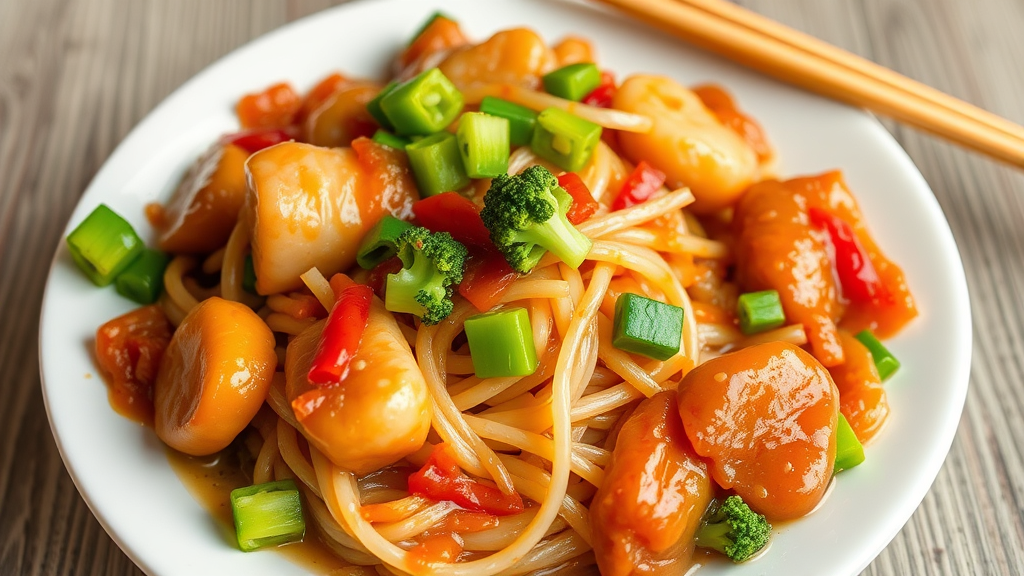

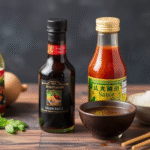
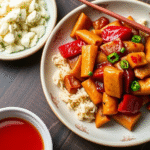
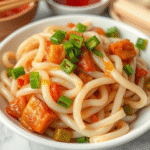
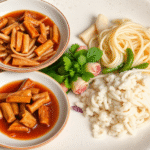
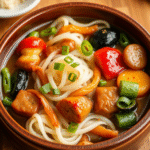
Leave a Reply